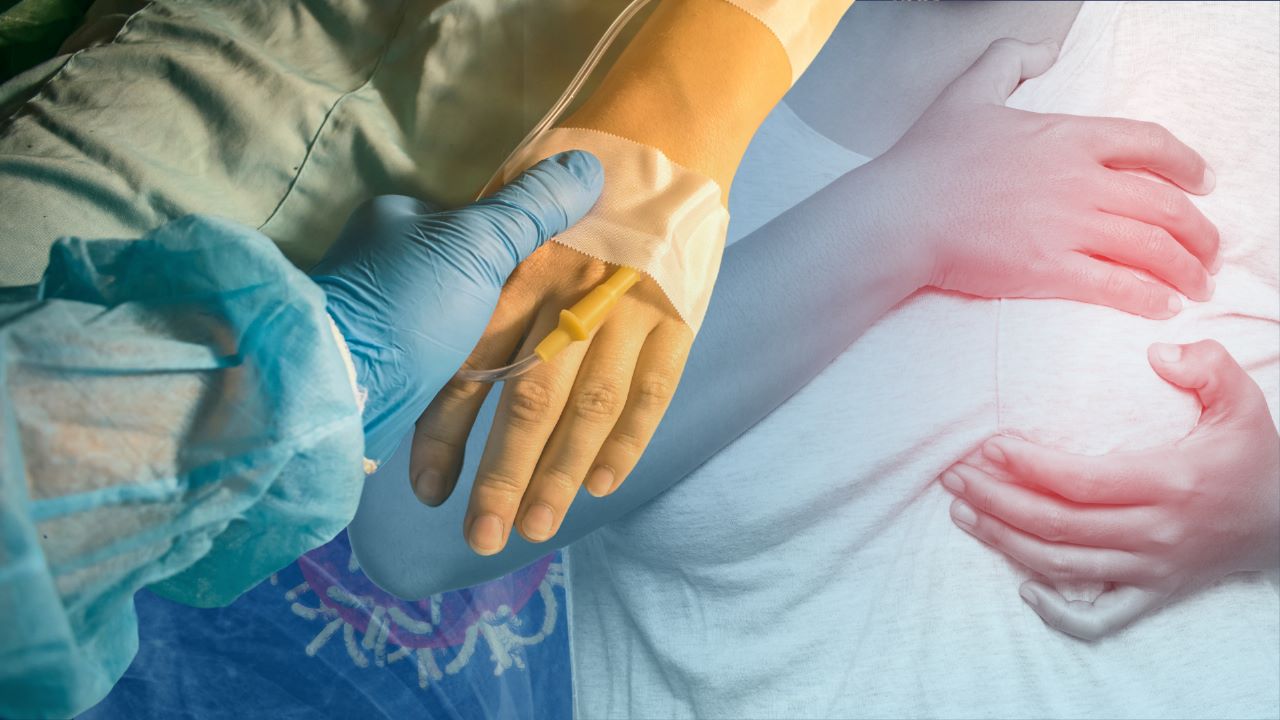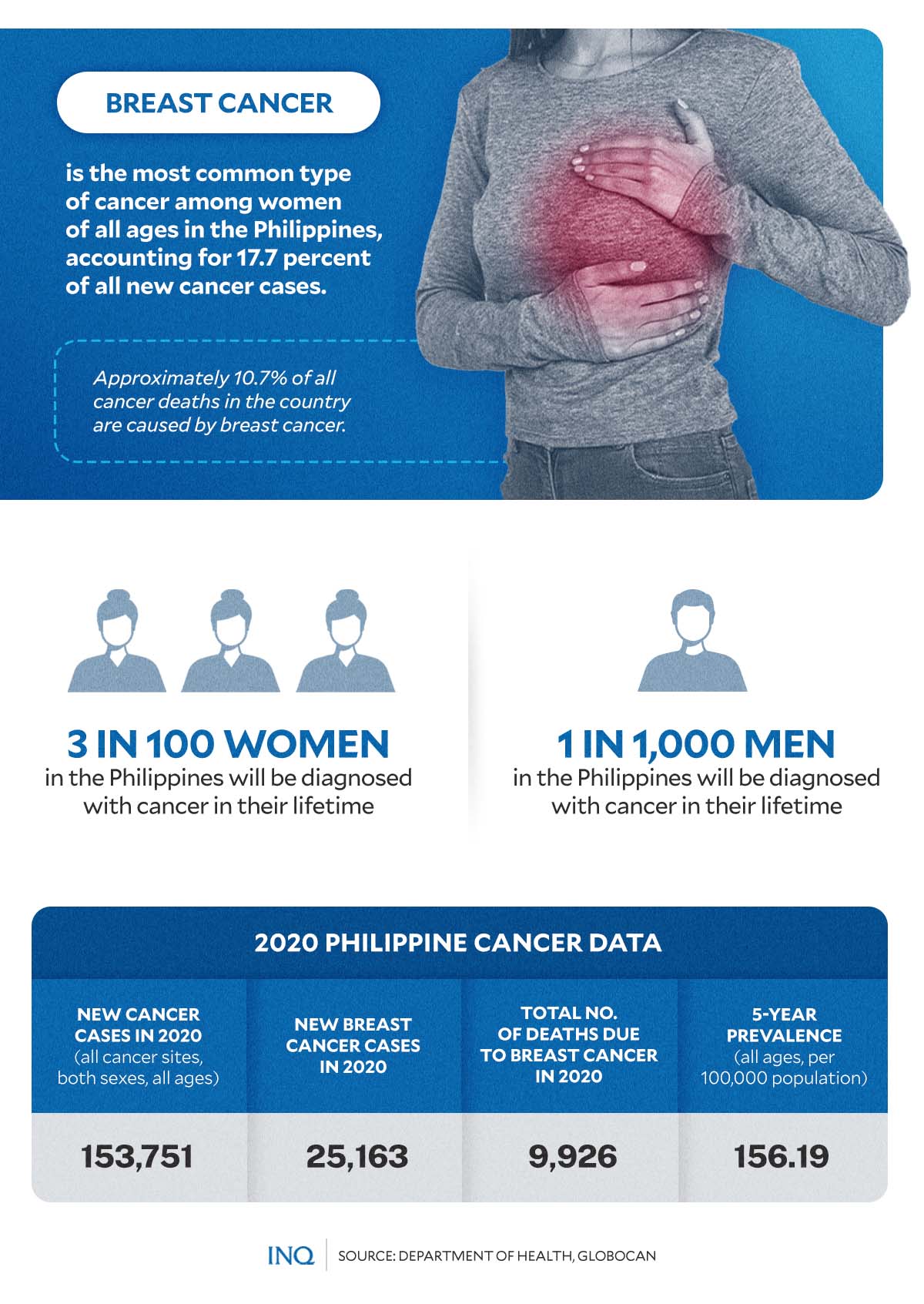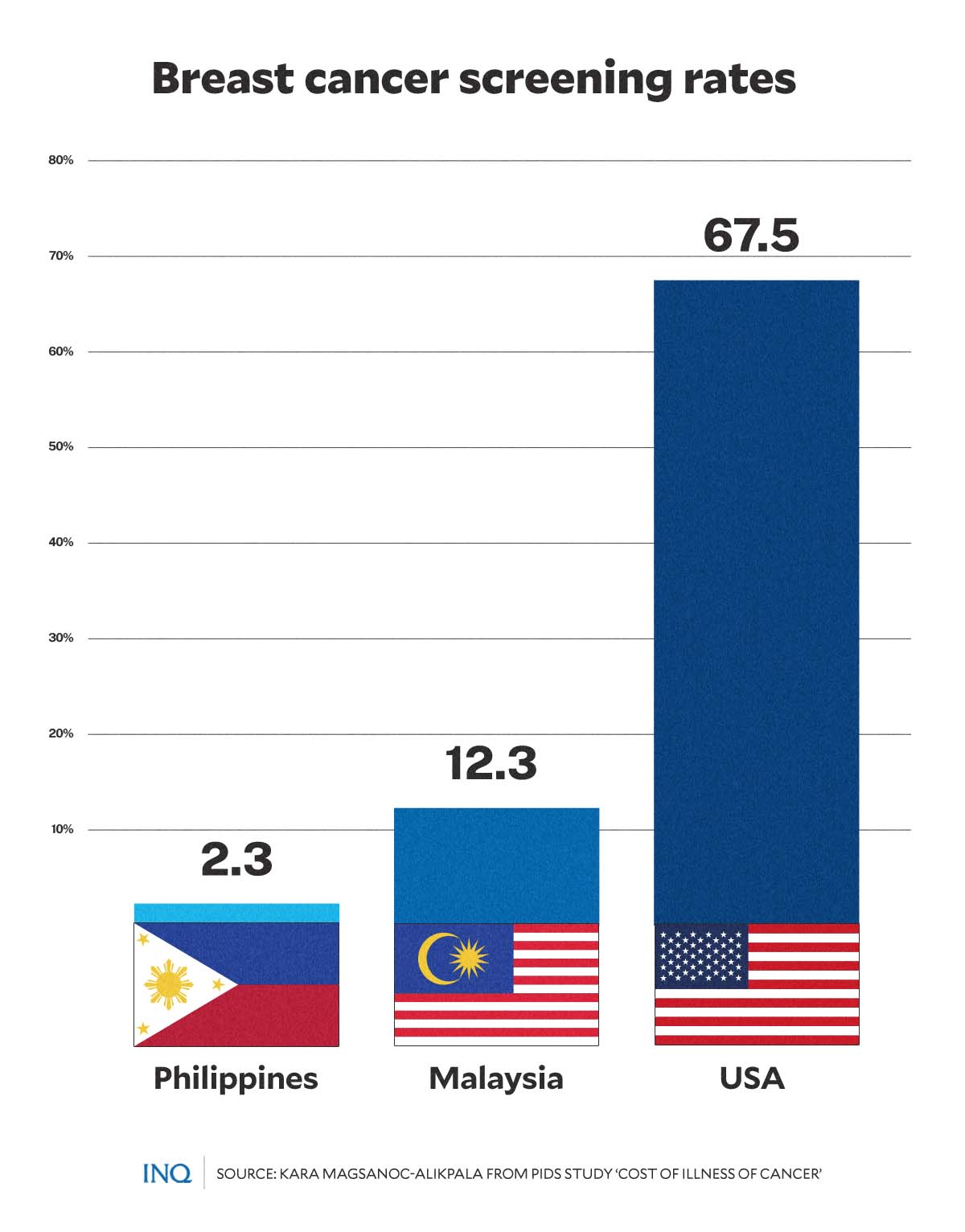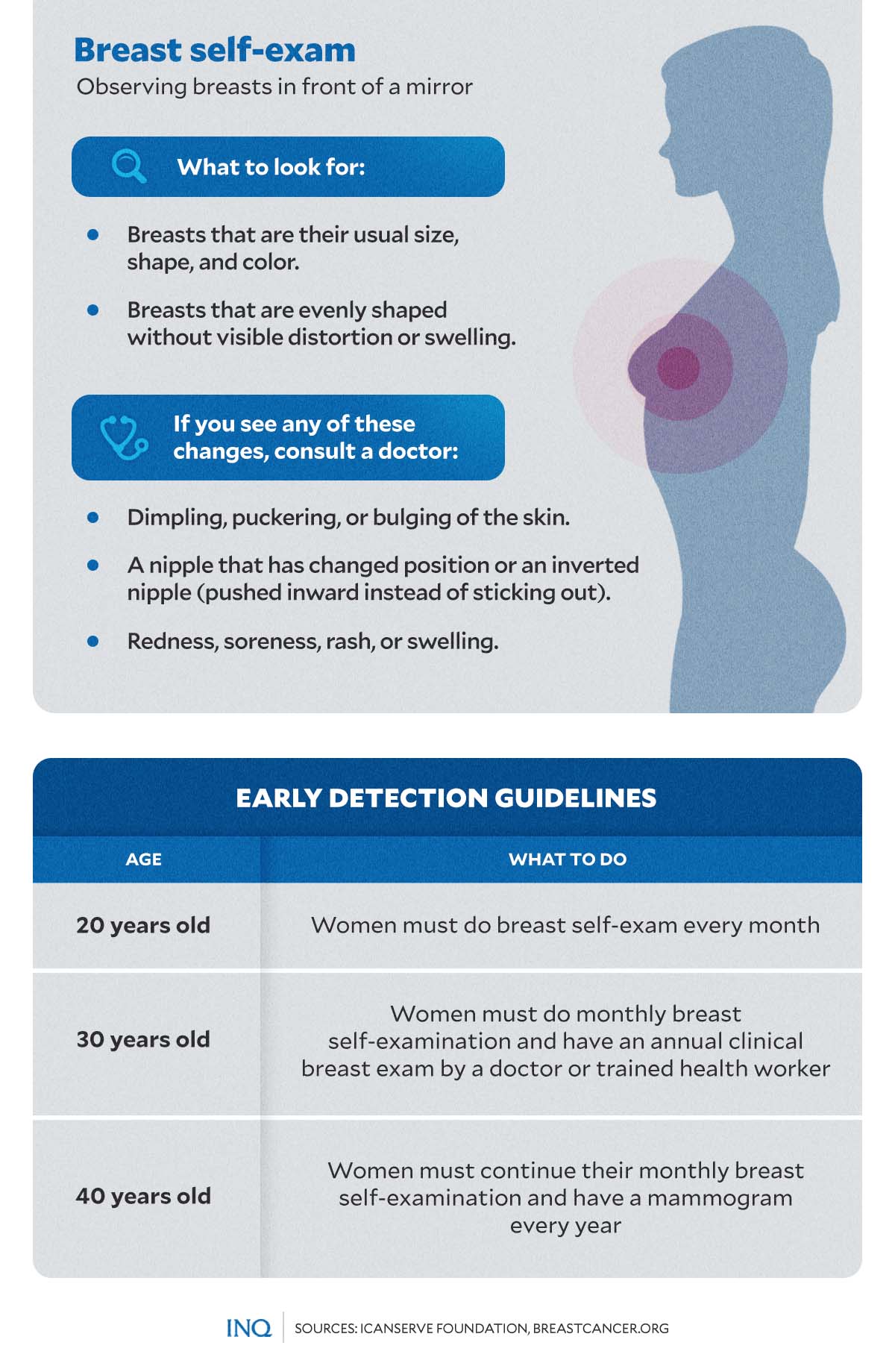Breast cancer: ‘No longer a death sentence’
(Last of three parts)
MANILA, Philippines—“There are usually two things that Filipinos diagnosed with cancer fear the most: The fear of cost and the fear of death.”
As someone who has interacted with breast cancer patients and advocates for over a decade, this is how journalist, breast cancer awareness advocate, and breast cancer survivor Kara Magsanoc-Alikpala described what she has observed as the perception of most Filipinos about cancer.
“Because many think they are going to die of cancer,” she added.
Oncologist Wilfredo Liangco described that in most movies, when a doctor gives a cancer diagnosis to a patient, the first question that is always asked by the latter would be: “How long do I have?”
Article continues after this advertisementLiangco said in reality, it is a question that he finds very difficult to answer.
Article continues after this advertisement“It is difficult, not because we don’t want to hurt the patient’s feelings or to pull them down, but because we are always hopeful that we can improve their quality of life and, in some cases, improve survival,” he said.
Studies published in various academic and scientific journals noted that women in many Asian countries tend to directly connect cancer to death. This causes women to avoid screening due to anxiety, worry, and fear.
A study published last year attributed low breast and cervical cancer screening among Filipino women to low health literacy, geographic disparities, and high out-of-pocket care costs. Fatalistic attitudes toward cancer and the stigma associated with a cancer diagnosis further contribute to low screening rates in the Philippines.
However, as Philippine Society of Medical Oncology president Dr. Rosario Pitargue noted, with advances in cancer treatment and management, cancer is no longer a death sentence.
“Breast cancer is no longer a death sentence, and breast cancer survivorship has come a long way in recent years. Innovative treatments offer women a greater chance than ever before to live healthy, fulfilling lives following their diagnosis,” Swiss multinational pharmaceutical corporation Novartis noted.
‘No longer a death sentence’
“Breast cancer is no longer a death sentence” is a message that breast cancer advocates, support groups, and medical experts have been sending out to bring hope to breast cancer patients, raise awareness, and encourage women to get regular screening tests.
“[B]reast cancer is no longer a death sentence. This battle can be won, whether you are just beginning your journey or re-embracing life after treatment,” advocacy group ICanServe Foundation wrote in their recently released breast cancer patient’s manual.
“We hope this manual sends the message that cancer is not a death sentence. Many things can be done to ease the burden of a cancer diagnosis. No one is alone in her fight,” said ICanServe President Nikoy de Guzman at the launch of the manual.
READ: ICanServe Foundation empowers breast cancer patients with launch of Comprehensive Patient Manual
Aileen Antolin, vice president of Kasuso Foundation—Philippine Foundation for Breast Care Inc., echoed the sentiment during a radio interview, stressing that there is now hope for cancer patients.
“Once you are diagnosed with cancer […] before we have this stigma that cancer is [a] death sentence, what I would like to say is that there is hope and that cancer is just a word. It is not a sentence, more so it is not a death sentence,” said Antolin.
This, however, does not mean that there is a silver bullet to cure breast cancer or other cancer types. Instead, this refers to how early diagnosis and access to proper treatment and support could improve breast cancer survivorship.
‘Ang OA pala namin’
“Noong una, parang feeling talaga namin meron nang taning ‘yung buhay ni mama. Araw araw kaming magkakasama sa bahay […] kahit nahihirapan kami financially, gusto namin sama-sama kami kumakain kasi feeling namin parang anytime […] baka bumigay na yung katawan ni mama,” Catherine Lauron told INQUIRER.net.
(At first, we truly felt that mama’s days were numbered. Even though we struggled financially, we wanted to eat together as a family every day because we thought that mama’s body would give way at any moment.)
Lauron’s mother-in-law, Virginia Domondon-Pancho, was diagnosed with early-stage breast cancer in late 2019. Within a few months of her diagnosis, Pancho’s cancer quickly progressed to stage 4.
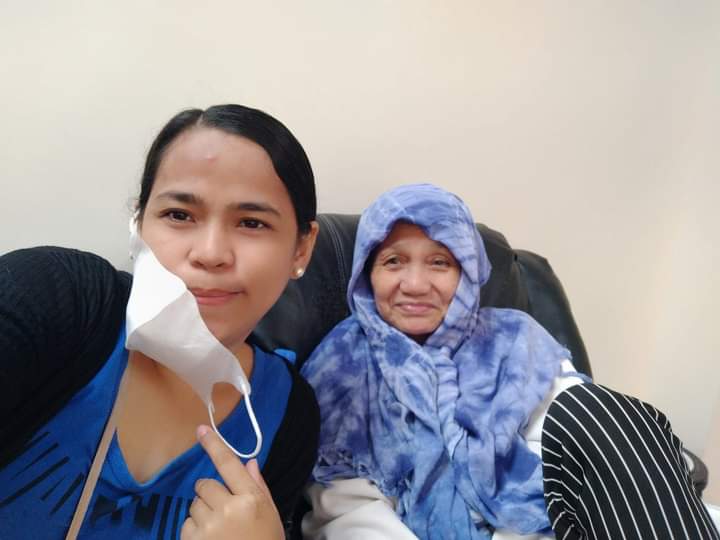
34-year-old Catherine Lauron (left) and 63-year-old breast cancer patient Virginia Domondon-Pancho (right) | Photo courtesy of Catherine Lauron
“Noong nalaman namin [na may kanser] at naoperahan si mama, parang lahat ‘di na namin inisip, ibinigay na namin ‘yung gusto ni mama. Nag-usap usap na kami nag iyakan na kami, nag bilinan na,” she added.
(When we discovered that she has breast cancer and after her surgery, we didn’t think twice anymore; we gave her everything she wanted. Our family had discussions, we wept together, and we already said our goodbyes.)
It was only when Lauron talked with other breast cancer patients, relatives, and companions of patients in a tumor clinic that she realized they might have been overacting.
“Ay parang ang OA pala namin. Ang OA namin sa part na nag-iiyakan kami araw araw, kasi pag dating [sa clinic] ‘yung ibang patients parang ‘di sila mga cancer patients. Tapos ‘yung case ni mama, meron pa palang mas malala sa kanya, na ‘di na nakakalakad, nakahiga na lang, naka support na lang sa oxygen,” Lauron recalled.
(We were OA. We were crying every day. When we arrived at the clinic, the other patients there were as if they were not cancer patients. We realized other patients were in worse condition than my mother-in-law.)
“Kaya sabi ko kay mama, ‘okay lang ‘yan, ‘ma, laban lang tayo ‘ma.’ Hanggang sa paulit-ulit na scenario na ganon hanggan sa parang bumalik kami sa normal, natanggap ko, natanggap ng byenan ko. Normal lang ‘yung nangyari na may kanser si mama, basta dire-diretso lang ang chemo,” she added.
(That’s why I told mama, ‘It’s okay, we’ll continue to fight.’ We continued to have the same scenario until we felt like we were back to normal. I finally accepted our condition, and my mother-in-law accepted as well. It’s normal that she has cancer as long as we continue her chemotherapy.)
Early detection and breast exam
For Alikpala, to say that breast cancer is no longer a death sentence may mean many things.
When asked why getting diagnosed with the “Big C” is not an automatic death sentence, she noted that there are already various methods to detect cancer early — which reduces cases of death due to the disease.
“There are many ways to find cancer, from breast self-exam, clinical breast exam, mammogram, breast ultrasound,” she told INQUIRER.net.
“We simply need louder campaigns to inform the public, and we need to train more health workers to do pre-clinical or clinical breast exams so cancers are diagnosed earlier. This is an affordable option, and in many cases, this service comes free,” she added.
Citing data from the International Agency for Research on Cancer (IARC), Alikpala noted that clinical breast exam (CBE) has been found to lead to an earlier diagnosis and a 30 percent reduction in deaths due to breast cancer.
For advanced breast cancer stages, she stressed that there are existing medicines to help many stage 4 breast cancer patients live long, productive lives.
Breast cancer is the most common type of cancer among women of all ages in the Philippines, accounting for 17.7 percent of all new cancer cases. Approximately 10.7 percent of all cancer deaths in the country are caused by breast cancer.
The latest data from the Global Cancer Observatory (Globocan) registry showed that in 2020, there were 27,163 breast cancer cases in the Philippines, and 9,926 Filipino women died of the disease.
Patient hesitancy
When it comes to improving and conducting more clinical trials for breast cancer treatment in the country, Antolin, however, underscored that there are other factors to consider — including the hesitancy of some cancer patients to participate in trials and studies.
“There are many considerations. Filipino patients still have hesitation when they are told that they are going to be part of a clinical trial. There’s a misconception that [they are going to be] lab rats or guinea pigs,” she said in Filipino.
The hesitancy and misconceptions, Antolin said, could have an impact even when pharmaceutical companies and hospitals have already committed and prepared for clinical trials.
According to Antolin, another consideration that should be addressed would be the low health-seeking habits among Filipinos.
“We always emphasize that a reason why cases of breast cancer with late diagnosis continue to increase is that [patients] would rather wait until they are bedridden before they seek treatment,” she said.
“It is very important that we raise the level of awareness of people when it comes to early detection, especially since there is a stigma attached to [breast cancer],” she added.
READ: More needs to be done: Better breast cancer treatment, care pushed
Data by researchers from the Philippine Institute for Development Studies (PIDS) showed that compared to countries such as Malaysia and the USA, with breast cancer screening rates of 12.3 percent and 67.5 percent, the screening rate in the Philippines is only 2.3 percent.
“Breast and cervical cancer screening are extremely low in the Philippines compared to upper-middle and high-income countries,” said PIDS senior research fellow Dr. Valerie Ulep.
“A big portion [of the] country’s cancer burden is preventable. However, it boils down to comprehensive preventative and curative interventions for the population,” he added.
READ: PH cancer patients lack access to preventive screening, costly treatment
What should women do?
According to ICanServe Foundation, there are early detection guidelines that may be followed.
At age 20, women must do a breast self-exam every month. At age 30, women must do a breast self-examination monthly and have an annual clinical breast exam by a doctor or trained health worker.
At age 40, women must continue their monthly breast self-examination and have a yearly mammogram.
“A breast self-exam that you do for breast awareness helps you understand the normal look and feel of your breasts. If you notice a change in your breasts that seems abnormal or if you notice one breast is different when compared with the other, you can report it to your doctor,” US-based hospital Mayo Clinic explained.
“Although the breast self-exam technique isn’t always a reliable way to detect breast cancer, a significant number of women report that the first sign of their breast cancer was a new breast lump they discovered on their own,” it added.
Mayo Clinic advised women not to panic when they find a change or lump in their breasts since most women may have some lumps or lumpy areas in their breasts, and most breast lumps are benign or non-cancerous.
However, it is recommended to make an appointment with a doctor or primary health care provider if women notice:
- a hard lump or knot near the underarm
- changes in the way the breasts look or feel, including thickening or prominent fullness that is different from the surrounding tissue
- dimples, puckers, bulges, or ridges on the skin of the breast
- a recent change in a nipple to become pushed in or inverted instead of sticking out
- redness, warmth, swelling or pain
- itching, scales, sores or rashes
- bloody nipple discharge
“If you suspect breast cancer, what should you do? First, you must not panic, of course, because as breast cancer survivors like to reiterate, this is not an automatic death sentence,” ICanServe Foundation noted.
“Also, do not ignore these symptoms and hope they go away. The sooner you confront the reality, the better the outcome,” it added.
Finding support and assistance
Upon breast cancer diagnosis, the ICanServe Foundation noted that the patient will need emotional and decision-making support.
“You must be monitored for levels of anxiety and distress, so while it is helpful to focus and not to panic — as survivors like to say, breast cancer is no longer an automatic death sentence — it will not help you to pretend to not need help,” the advocacy group said.
“Involve as many people as you comfortably can in your plan for support. Can an officemate handle some work responsibilities? Can a sister, son, or daughter take over your household chores? Can they or your husband or partner, for example, take care of young children’s needs, if there are any?”
On their websites, the Philippine Society of Medical Oncology (PSMO) and the Philippine Cancer Society listed contact details of cancer support groups and various government, nongovernment, and other agencies that offer financial assistance for breast cancer patients.
Aside from their breast cancer patient manual, ICanServe Foundation also has a step-by-step guide on how to avail of financial assistance from various government agencies on their website.
(This report was published with the support of Philippine Press Institute, Novartis, and ICanServe Foundation)
